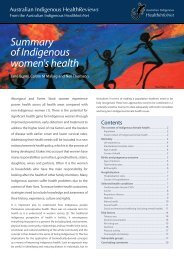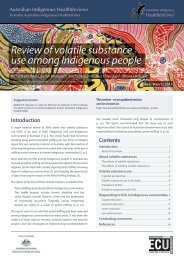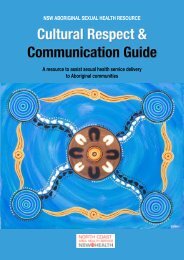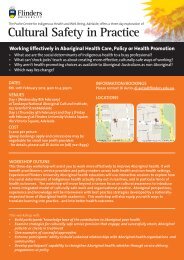hearing loss and the criminal justice system - Australian Indigenous ...
hearing loss and the criminal justice system - Australian Indigenous ...
hearing loss and the criminal justice system - Australian Indigenous ...
You also want an ePaper? Increase the reach of your titles
YUMPU automatically turns print PDFs into web optimized ePapers that Google loves.
Senate Inquiry March 2010_________________________________________________________________________________________________________________Case Study from NAAJA (2010)‘The consequences of not properly addressing <strong>the</strong> <strong>hearing</strong> impairment issuesfacing <strong>Indigenous</strong> defendants in <strong>the</strong> <strong>criminal</strong> <strong>justice</strong> <strong>system</strong> can be devastating.The case study below demonstrates <strong>the</strong> spiralling consequences that can occur:Case Study – NN is charged with several serious driving offences, including driving undersuspension. He is deaf, <strong>and</strong> does not know sign language. N has significantdifficulties explaining himself <strong>and</strong> will often nod during conversations, whichleads people to believe he is replying ‘yes’, when, in fact, he does notunderst<strong>and</strong>. He has a very limited <strong>and</strong> idiosyncratic form of sign language. Everynow <strong>and</strong> <strong>the</strong>n he does something that resembles signing.N is not able to communicate with his lawyer. An AUSLAN interpreter has beenutilised, but because N cannot sign, he is not able to convey instructions to hislawyer of any complexity. N’s lawyer sought to arrange a Warlpiri finger talkerthrough <strong>the</strong> Aboriginal Interpreter Service, but <strong>the</strong> interpreter concerned wasnot willing or able to come to court. It was also not known if N would even beable to communicate using Warlpiri finger talking.The witness statements disclosed to defence included a statement from a policeofficer describing how she came upon a group of men drinking in a park. She rana check on N, to discover that he had warrants for his arrest, at which time shearrested him. Her statement reads: "It is my belief that he understood as helooked at me <strong>and</strong> became quite distressed. I asked (N) verbally if he understood<strong>and</strong> he nodded <strong>and</strong> turned his head away from me while raising his arms in <strong>the</strong>air."N is currently on bail, but has spent significant periods on rem<strong>and</strong> at DarwinCorrectional Centre. His charges are yet to be finally determined, <strong>and</strong> anapplication for a stay of proceedings is pending. N is effectively trapped in <strong>the</strong><strong>criminal</strong> <strong>justice</strong> <strong>system</strong>. He cannot plead guilty or not guilty because he is notable to communicate with his lawyer <strong>and</strong> provide instructions.He had previously been granted bail, but after failing to attend court as required,his bail was revoked. Significantly, his inability to convey information (or tounderst<strong>and</strong> what his lawyer was trying to tell him) in relation to his charges hasalso been highly problematic in relation to bail.For example, when he was explaining to his lawyer, with <strong>the</strong> assistance of <strong>the</strong>AUSLAN interpreter, where he was to reside, both <strong>the</strong> interpreter <strong>and</strong> lawyerunderstood N to be referring to a particular community. It was only when <strong>the</strong>_________________________________________________________________________________________________________________19 Phoenix Consulting








